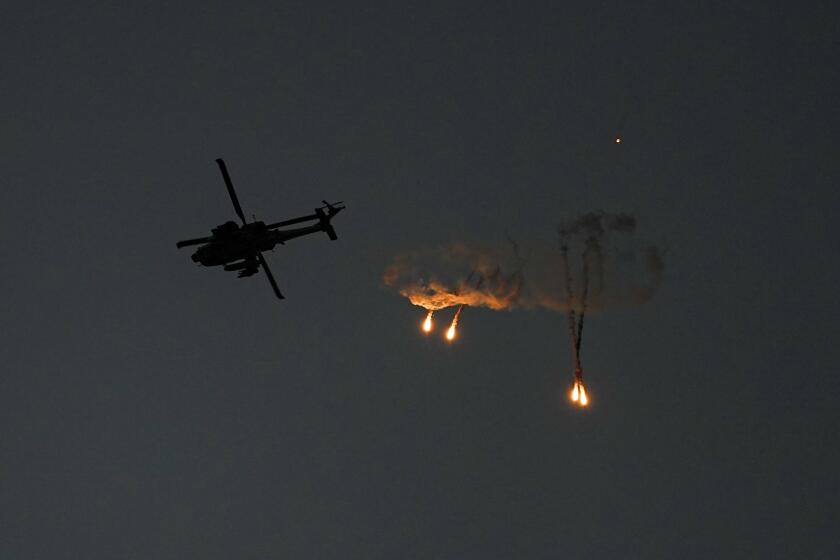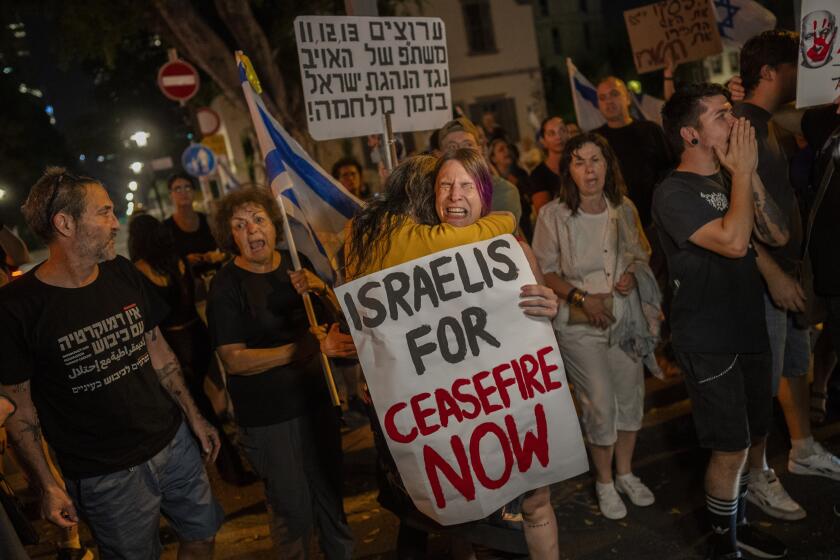
- Share via
DEIR AL BALAH, Gaza Strip — Crowds of Palestinian families stretching as far as the eye could see walked out of Gaza City and surrounding areas toward the south on Thursday to escape Israeli airstrikes and ground troops battling Hamas militants in dense urban neighborhoods. Others joined tens of thousands taking shelter at the city’s biggest hospital, not far from the fighting.
The accelerating exodus to the southern Gaza Strip came as Israel agreed to put in place four-hour daily humanitarian pauses and to open a second route for people to flee the north, the White House said. The scope of the pauses was not immediately clear. The agreement came as Western and Arab officials gathered in Paris on Thursday to discuss ways of providing more aid to civilians in Gaza.
Separately, mediators worked on a possible deal for a three-day cease-fire in exchange for the release of around a dozen of the more than 200 hostages held by Hamas, according to two Egyptian officials, a United Nations official and a Western diplomat.
Israeli Prime Minister Benjamin Netanyahu has said any temporary cease-fire would have to be accompanied by the release of hostages. Their plight has galvanized Israeli support for the war despite growing international concerns.
Asked in a Fox News interview that aired Thursday about the prospect of a daily humanitarian pause, Netanyahu replied that “the fighting continues against the Hamas enemy, the Hamas terrorists, but in specific locations for a given period, a few hours here, a few hours there, we want to facilitate a safe passage of civilians away from the zone of fighting. And we’re doing that.”
Gaza’s largest city is the focus of Israel’s campaign to crush Hamas after its deadly Oct. 7 assault inside Israel — and the Israeli military says Hamas’ main command center is located in and under the Shifa Hospital complex. The militant group and hospital staff deny that claim.
Growing numbers of people have been living in and around the hospital complex, hoping it will be safer than their homes or U.N. shelters in the north, several of which have been hit repeatedly. Israeli troops were about 2 miles from the hospital, according to its director.
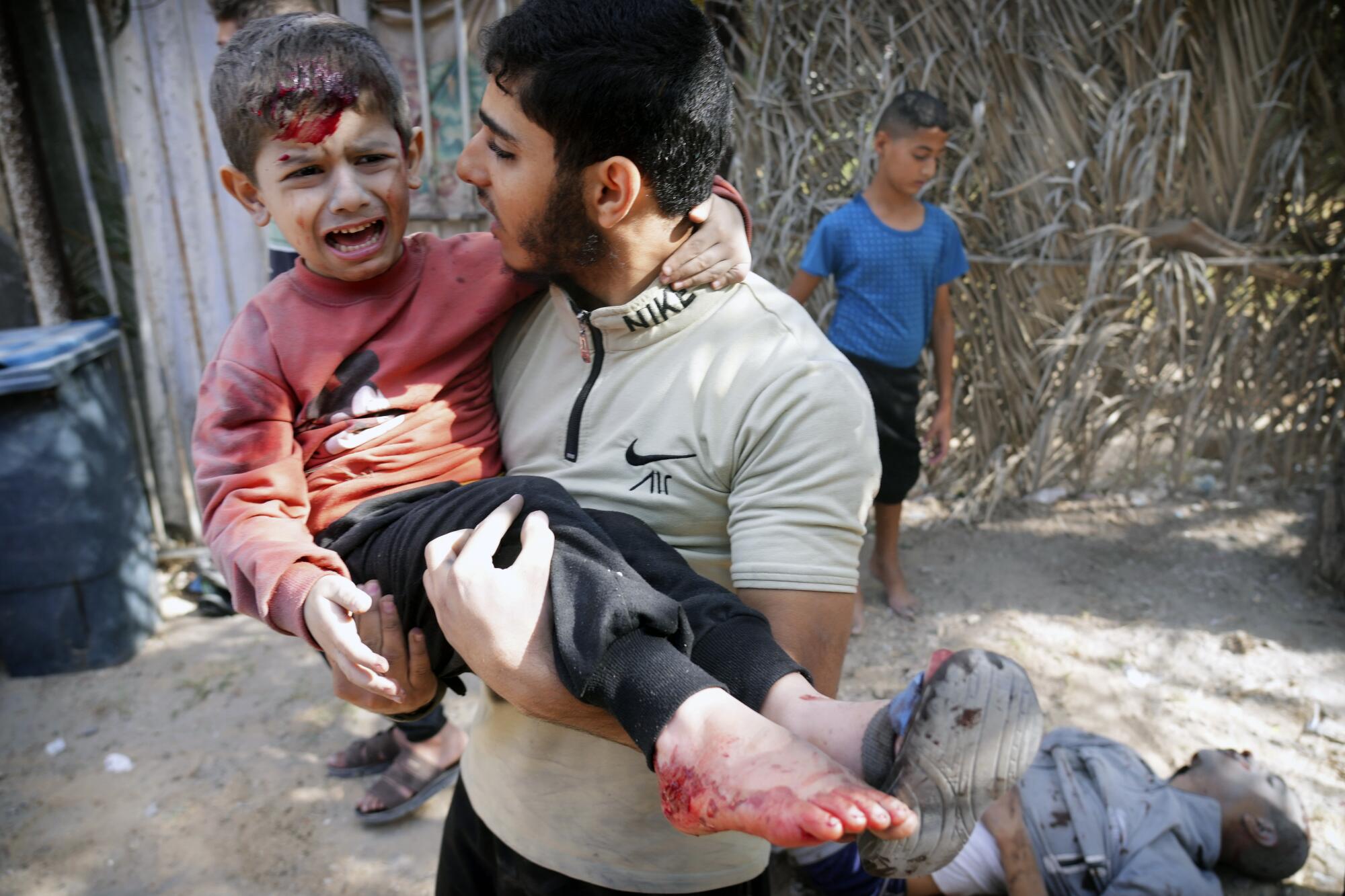
A Times special correspondent in Gaza offers a personal account of living in a place where nowhere feels safe.
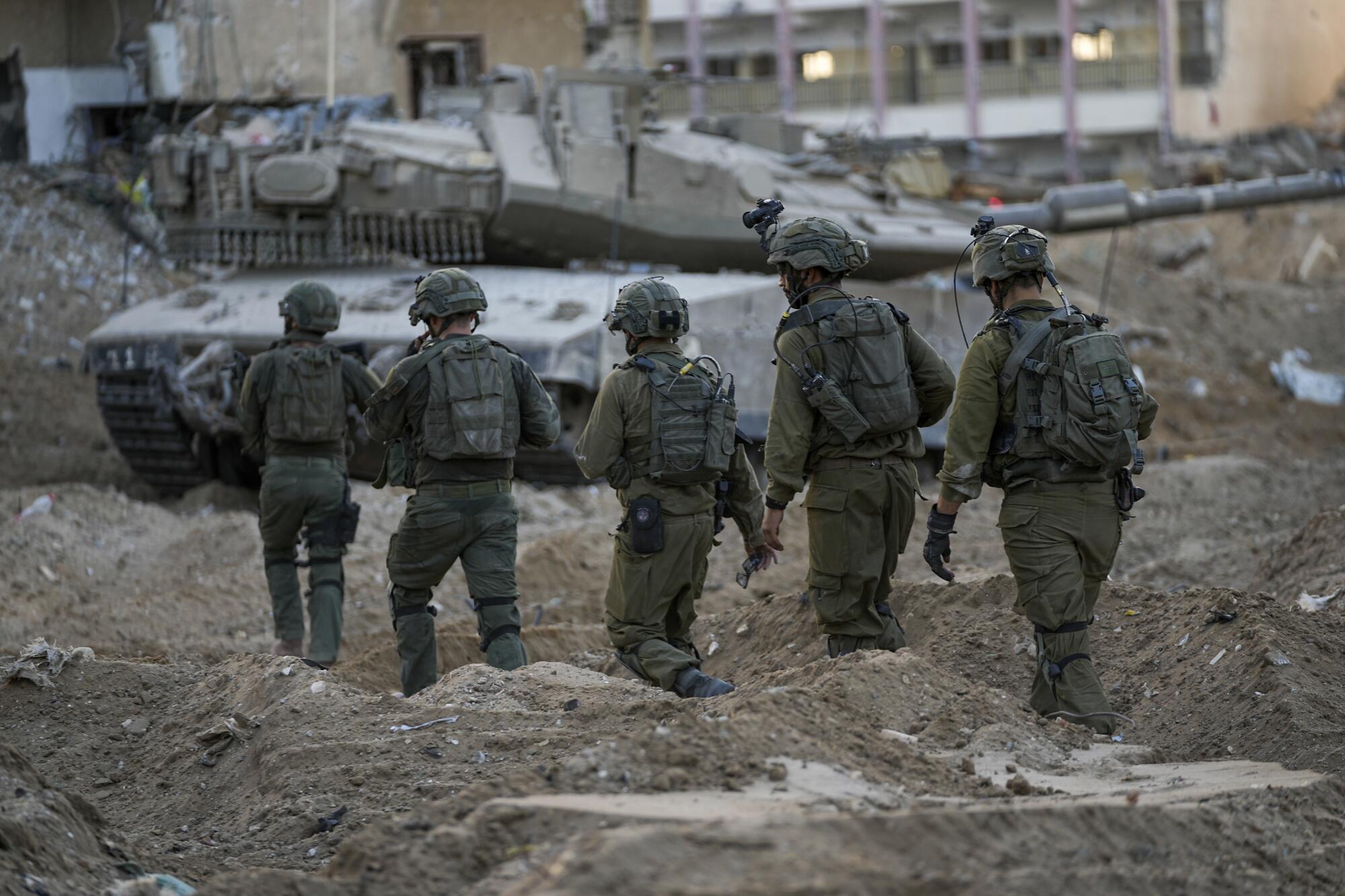
Meanwhile, Israeli ground forces battled near the Shifa Hospital, where the Israeli military says senior Hamas leaders are hiding, using the facility as a shield. Hamas and hospital staff say the military is creating a pretext to strike it.
Scores of wounded people were rushed to Shifa overnight, the hospital’s general director, Muhammad Abu Salima, told the Associated Press on Thursday. “At dawn, a shell landed very close to the hospital, but thank God only a few people had minor injuries,” he said.
Conditions are worsening for people sheltering there, said three people who had left the hospital to go south in the last two days.
Families are sleeping in hospital rooms, even surgical theaters and the maternity ward, or on the streets outside. Daily food distributions helped a tiny number for a time, but there has been no bread for the last four days, they said. Water is scarce and usually polluted, and few people can bathe. Still more families are arriving, believing it is safer than fleeing to the south, where airstrikes also continue, the people said, speaking on condition of anonymity for fear of reprisals.
A month after Hamas’ surprise attack nearly brought Israel to its knees, the country’s battered ‘peace camp’ is rising — or trying its best to do so.
International journalists who entered northern Gaza on a tour led by the Israeli military Wednesday saw heavily damaged buildings, fields of rubble and toppled trees along the Mediterranean shoreline.
More than two-thirds of Gaza’s 2.3 million people have fled their homes since the war began, with hundreds of thousands heeding Israeli orders to flee south.
But the conditions there are also dire. As Israel has continued to strike what it says are militant targets in the south, it has frequently destroyed homes with families inside.
Aid deliveries into Gaza from Egypt have reached an average of 100 trucks a day. Relief workers say that is still far below what is needed.
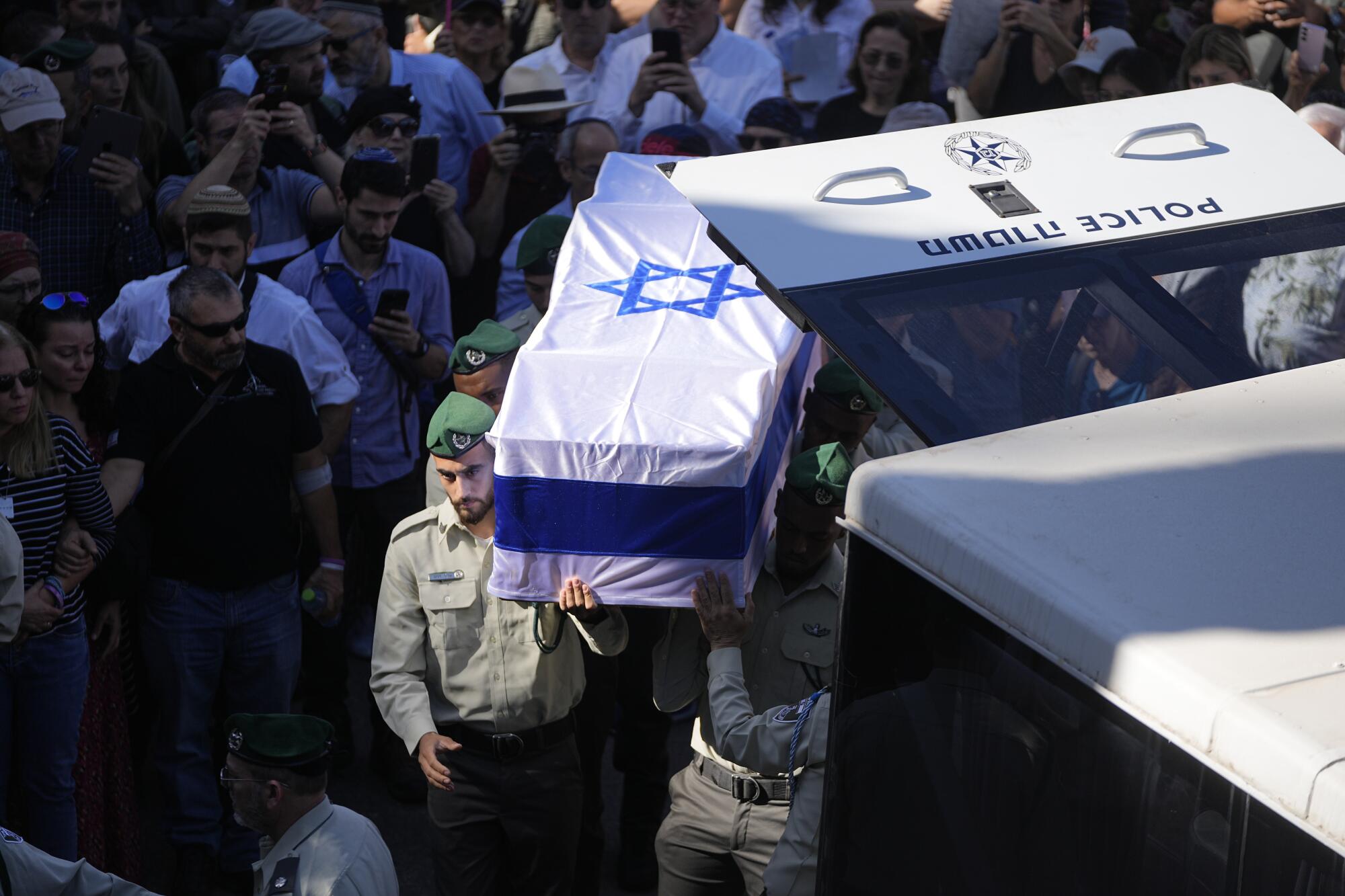
The World Health Organization said a lack of clean water and bathing facilities in shelters across Gaza has fueled the spread of infectious diseases, including scabies, lice, chickenpox, skin rash and respiratory illness. It has logged more than 33,000 cases of diarrhea since mid-October — more than half among children younger than 5.
Still, the exodus from Gaza City and surrounding areas in the north has accelerated in recent days. The U.N. Office for the Coordination of Humanitarian Affairs said 50,000 people fled south on Gaza’s main highway Wednesday during a daily, hours-long window announced by the Israeli military.
There are clashes and shelling near the road, and evacuees reported seeing corpses alongside it, the U.N. office said. Most are traveling on foot with only what they can carry, many holding children or pushing older relatives in carts.
“I’m carrying my house on my back,” said Kamal Nsew, a 28-year-old, pointing to the possessions tied to his body. He had been walking three hours, he said. “We’ve been expelled, we’ve been put through a catastrophe. I don’t know where my people are and don’t know what is coming for us.”
His use of the Arabic word “nakba” — which literally means “catastrophe” — is a reference to the expulsion or flight of about 700,000 Palestinians from their homes in what is now Israel during the 1948 war surrounding Israel’s creation. More than half of Gaza’s residents are refugees from that war, or their descendants.
Start your day right
Sign up for Essential California for the L.A. Times biggest news, features and recommendations in your inbox six days a week.
You may occasionally receive promotional content from the Los Angeles Times.
The Hamas-run Interior Ministry, which has urged Palestinians to stay in their homes, has told media outlets to not circulate video of people fleeing.
Palestinians arriving in the south have encountered a scarcity of food and medicine. Fistfights have broken out in bread lines. Residents wait hours for a gallon of brackish water that makes them sick. Scabies, diarrhea and respiratory infections rip through overcrowded shelters. And some families have to choose who eats.
“My kids are crying because they are hungry and tired and can’t use the bathroom,” said Suzan Wahidi, an aid worker and mother of five at a U.N. shelter in the central town of Deir al Balah, where hundreds of people share a single toilet. “I have nothing for them.”
A month of relentless bombardment in Gaza since the Hamas attack has killed more than 10,800 Palestinians — two-thirds of them women and children, according to the Health Ministry in the Hamas-run territory. More than 2,300 others are believed to have been buried by strikes that in some cases have demolished entire city blocks.
Israeli officials say thousands of Palestinian militants have been killed, and blame civilian deaths on Hamas. Gaza’s Health Ministry does not distinguish between civilians and combatants in its casualty reports.
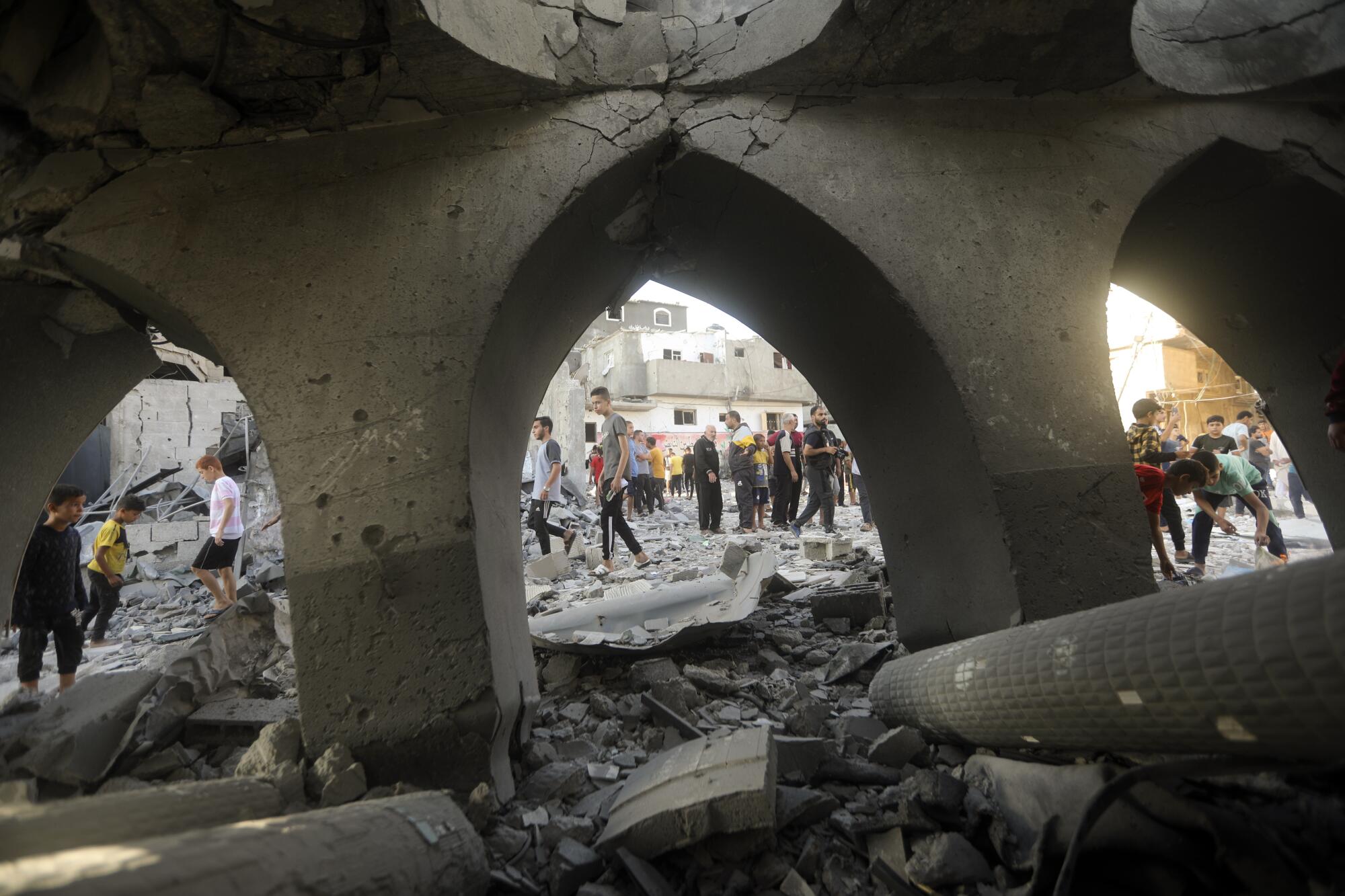
In the occupied West Bank, Israeli forces carried out their most intense raid in decades, storming the city of Jenin before dawn, sparking battles with Palestinian fighters that lasted into the afternoon and included an Israeli drone strike. At least 13 Palestinians were killed in the fighting, the Palestinian Authority Health Ministry said, and Hamas acknowledged nine of them as its fighters. The Israeli military put the number of militants killed at 10.
More than 1,400 people have died in Israel since the start of the war, most of them civilians killed by Hamas militants during their initial rampage. Israel says 32 of its soldiers have been killed in Gaza since the ground offensive began.
Palestinian militants have continued to fire rockets into Israel, and about 250,000 Israelis have been forced to evacuate from communities near Gaza and along the northern border with Lebanon, where Israeli forces and Hezbollah militants have traded fire repeatedly.
A drone exploded in the yard of a house in Israel’s Red Sea city of Eilat, causing no injuries, and a long-range surface-to-surface missile — whose source was under investigation — was intercepted before entering Israeli airspace, the military said. Yemen’s Houthi rebels said they fired a batch of missiles at Israel on Thursday, including toward Eilat — at least the fifth time the Iran-backed force has tried to strike Israel.
More to Read
Sign up for Essential California
The most important California stories and recommendations in your inbox every morning.
You may occasionally receive promotional content from the Los Angeles Times.
